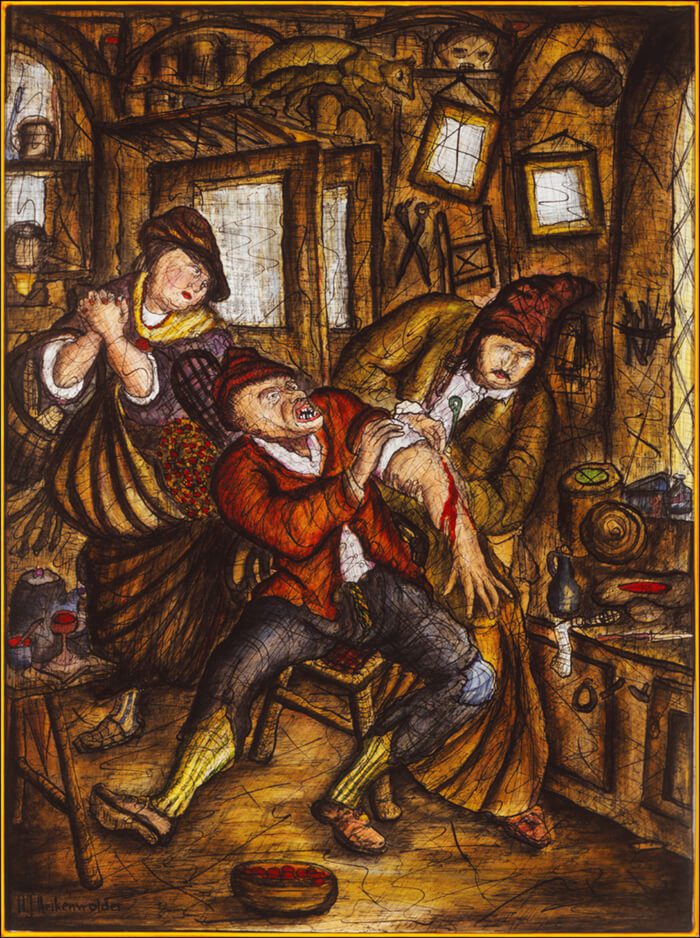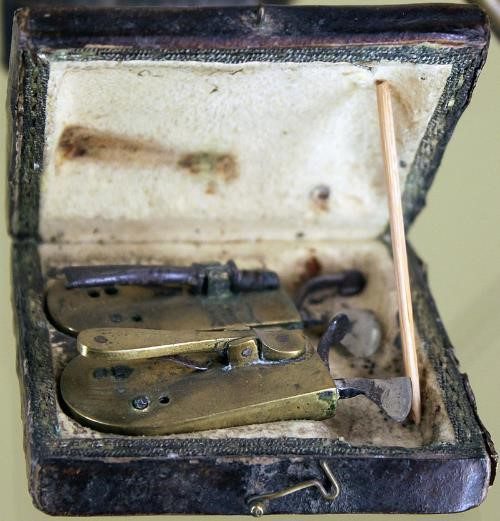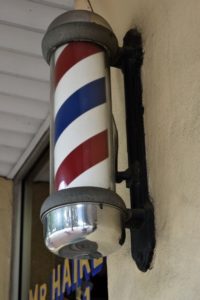It’s a familiar sight for anyone driving through a small American town. We see it all the time in movies, TV shows and in artwork. But for something that is as Americana as Apple Pie, we know very little about the origins of the Barbershop pole.
Well, the history of this red and white (and sometimes blue) striped pole is far more intriguing than you may have imagined!
Barber History in the Middle Ages
That’s right, the known history of the barbershop pole goes back all the way to the Middle Ages! That’s the 1100’s for anyone without a handy Gregorian calendar nearby.
However, to fully understand the barbershop pole, we must understand the history of the barber.
Europe in the 1100’s was a much less comforting world than what we experience today. It doesn’t take an historian to know that medical practices during this time were horrific in comparison to modern medicine.
But what does health care in the middles ages have to do with barbershops?
Well, in this period it was common for Physicians (those formally educated in medicine) to be focused solely on academia. It was beneath someone with an education to practice surgery on the common man, so there were no hospitals or “doctors’ offices” like we have to day.
What they did have, were barbers! In the middle ages, barbers were known as “Barber Surgeons.” Out of necessity, the local barber surgeon would often not only provide haircuts and shaves, but dentistry and even surgery.

The surgery of the day was also much different than what we’re used to. It was believed in those times that the draining of blood, or “bloodletting,” was the best method of curing many diseases.
Therefore, combs and scissors weren’t the only tools of the original barber surgeons. Commonly found were bandages, scalpels, pliers, knives and of course, leaches!

Leaches were believed to be one of the most economical and effective ways to draw “tainted” blood from the patient. Luckily, you won’t find any leaches at a barbershop today!
The Meaning Behind the Barbershop Pole
While a lot of lore surrounds the original meaning behind the barbershop pole, we can glean some key understanding based on writings about the barber surgeons.
Each color on the barber pole was said to represent one of the services available at the barber surgeon:
- Red – The red represented the red stained blood clothes from surgery and bloodletting.
- White – The white represented dentistry (for the color of teeth).
- Blue – The blue was for other services less terrifying, like haircuts or shaves.
Some also say blue is more predominate in the United States versus Europe thanks to an added patriotic flair.
While the meanings may vary slightly based on the region or time, it’s clear that the barbershop pole is an homage to the days when the town barber was an integral figure for the health & well-being of the community.

Barbershop Pole Through the Years
Sadly, the sale and production of the barbershop pole began dropping as soon as the early 1900’s.The William Marvy Company, one of the few remaining manufacturers of authentic barbershop poles, now only produces approx. 500 barbershop poles per year.
With the advent of things like the phone book (or the modern-day internet), it’s no longer necessary to have the bright red, white and blue pole to signal to consumers the location of a barbershop.
Also, in the 20th century, the career of cosmetology branched apart from traditional barbering. Cosmetologists today offer a variety of services apart from just barbering, like hair coloring & styling.
Through it’s long and colorful history, the barbershop pole as seen quite a few changes. However, the most important component of the barbershop pole hasn’t changed. Barbershops today are still a sacred place in the community where people gather, tell stories and form relationships.
We’ll leave the leaches in the past, but we know the timeless relationship between hairdresser and client will live on long into the future.
